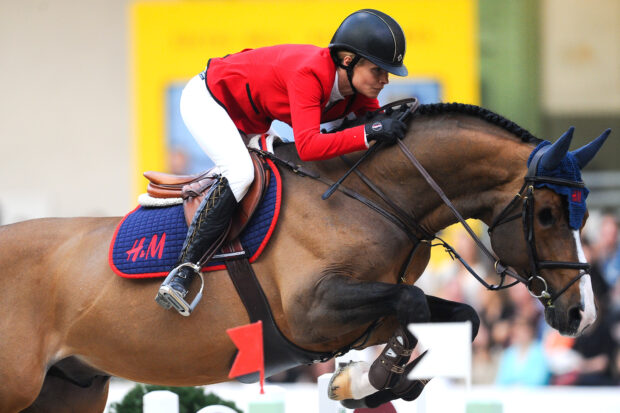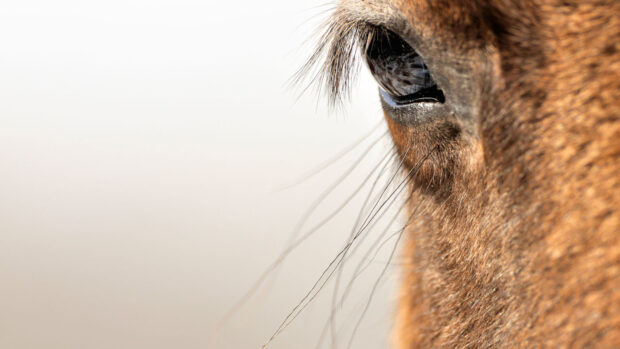Almost all horses have big, beautiful eyes. Unlike their riders, they never wink nor scowl, so if your horse has one eye partially or completely closed, it means something is wrong.
This is known as blepharospasm — it is obvious when the eye is totally shut, but can be harder to appreciate when it is more subtle, unless careful comparison is made between the eyes.
Another clue is photophobia, which is when a horse avoids bright light and is more comfortable in a darkened environment. Such a horse will squint in sunlight or screw the eyelid shut when a light is shone into the eye.
Another sign that something is wrong is profuse tear production or lacrimation. At first, the eye may just water more than normal, but if secondary bacterial infection develops, there will be pus in the discharge. It is all too easy to become accustomed to seeing a slight discharge, particularly associated with flies in summer and dusty stables in winter. As a result, a more significant discharge is sometimes ignored.
Beware of using whatever eye ointment is still sitting at the back of the tackroom cupboard. Eye treatments go off and should never be kept just in case they might be useful: what might be ideal for treating one condition could make another worse, so be cautious and check with your vet first.
What can be done?
If a horse is in obvious discomfort, with its eyelid tightly closed, do not force the eye open. By trying to do so, you could inadvertently apply sufficient pressure to rupture a severely damaged eye. If there is any cause for concern, contact your vet.
Leave the detailed examination to the vet, who can use topical anaesthesia, nerve blocks and sedatives to relax the horse and alleviate the discomfort. Once the pain is removed, the horse may open its eye and be more amenable to examination. The upper eyelid can then be lifted to see the structures underneath.
In addition to looking for external injuries, the vet will also check the internal structures of the eye, usually with a pen torch and an ophthalmoscope, and sometimes more sophisticated kit. This is best carried out in a darkened box. Drops may be put in the eye to dilate the pupil so the inside can be seen in more detail. The vet may carry out a number of other tests, depending on the problem being investigated.
What is most likely to be wrong?
Many common equine eye conditions affect the cornea, which is the clear window at the front of the eye. If this is not healthy, this essential optical barrier goes cloudy and when it is no longer transparent the horse simply cannot see out. The cornea is frighteningly fragile, being only about 1mm thick and prone to injury simply because the equine eye is in such a vulnerable position.
The horse’s ability to move its head rapidly can easily result in trauma. It is impressive that equine eyes ever survive undamaged. This is because the horse has inbuilt protective mechanisms, including a strong blink reflex that closes the eyelid before the eye hits something.
Another hazard for horses is dirt and dust getting into the eye. When you have something in your eye, you can fish it out. It is not so simple if you are a horse with hooves — you have to rely on the natural tear film to wash debris away. This means foreign bodies such as hayseeds and hairs can linger and cause serious damage to the eye surface, which can lead to an ulcer forming.



